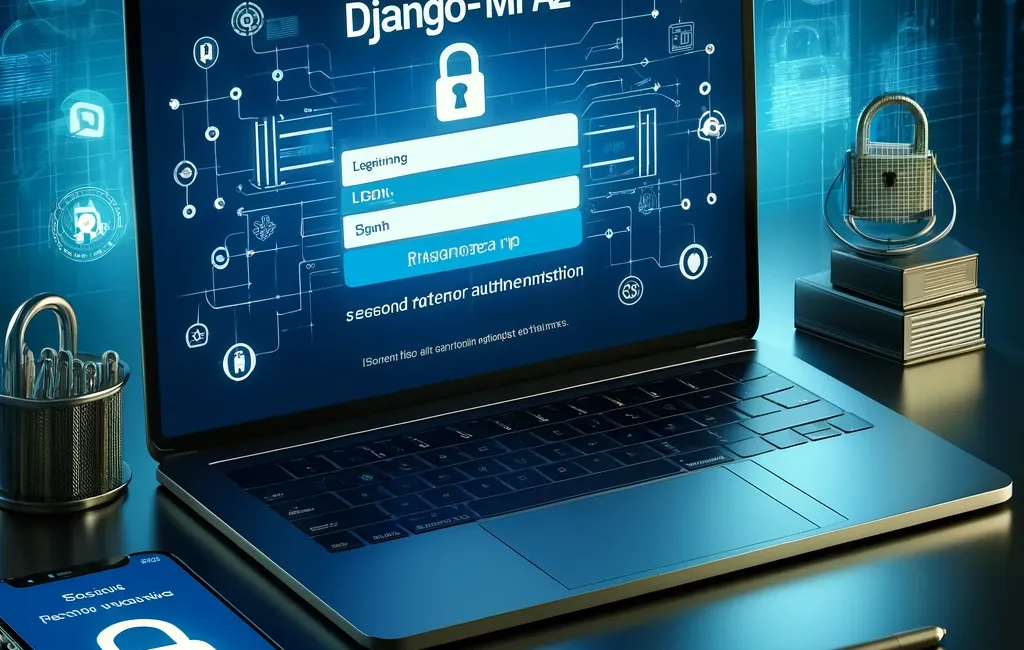Digital security is more critical than ever and protecting web applications against unauthorized access is a priority for developers and businesses alike.
Django offers robust security features out of the box. However, as cyber threats evolve, additional layers of security like Multi-Factor Authentication (MFA) become essential.
This is where Django-MFA2 comes into play— it is designed to integrate MFA into Django applications.
In this article, we will explore what Django-MFA2 is, how it works, and why it's a valuable tool for enhancing application security.
What is Django-MFA2?
Django-MFA2 is an open-source Django package that provides an extra layer of security by requiring users to verify their identity using multiple authentication methods.
Traditionally, web applications rely on single-factor authentication, typically a username and password.
However, Django-MFA2 introduces a secondary verification step through various forms like OTPs (One Time Passwords), U2F (Universal 2nd Factor) devices, and TOTP (Time-based One Time Passwords).
Get the eBook
Inside, you'll discover a plethora of Python secrets that will guide you through a journey of learning how to write cleaner, faster, and more Pythonic code. Whether it's mastering data structures, understanding the nuances of object-oriented programming, or uncovering Python's hidden features, this ebook has something for everyone.
Key Features of Django-MFA2
Here are some of the key features of Django-MFA2:
- Versatility in Authentication Methods: Django-MFA2 supports multiple forms of authentication, including OTPs sent via email or SMS, TOTP applications like Google Authenticator or Authy, and hardware tokens like YubiKey.
- Easy Integration: The package is designed to be seamlessly integrated into existing Django projects without requiring substantial changes to the application structure or database.
- Customizable and Flexible: Developers can customize Django-MFA2 to fit specific requirements, whether it’s adjusting the authentication flow or modifying the user interface.
- High-Security Standards: By adding an additional authentication step, Django-MFA2 significantly increases security, reducing the risk of unauthorized access even if a user’s primary password is compromised.
How Django-MFA2 Works
Integrating Django-MFA2 into a Django project involves several key steps:
Installation and Setup
Developers start by installing the Django-MFA2 package using pip and adding it to their project’s settings.
pip install django-mfa2
Configuration
The package needs to be configured to specify which authentication methods will be available and how they should be implemented.
Add mfa to your INSTALLED_APPS in your Django project's settings.py file:
INSTALLED_APPS = [
...
'mfa',
...
]
Next, you need to collect the static files belonging to Django-MFA2:
python manage.py collectstaticTo include MFA-related URLs in your Django project, modify your urls.py file as follows:
from django.urls import include, path
import mfa
from mfa.TrustedDevice import add as add_trusted_device
urlpatterns = [
...,
path('mfa/', include('mfa.urls')), # Include MFA URLs for handling MFA processes.
path('devices/add', add_trusted_device, name="mfa_add_new_trusted_device"), # Link to add a new trusted device.
...,
]
After you need to configure the desired authentication methods in the settings.py:
This article is for paid members only
To continue reading this article, upgrade your account to get full access.
Subscribe NowAlready have an account? Sign In

